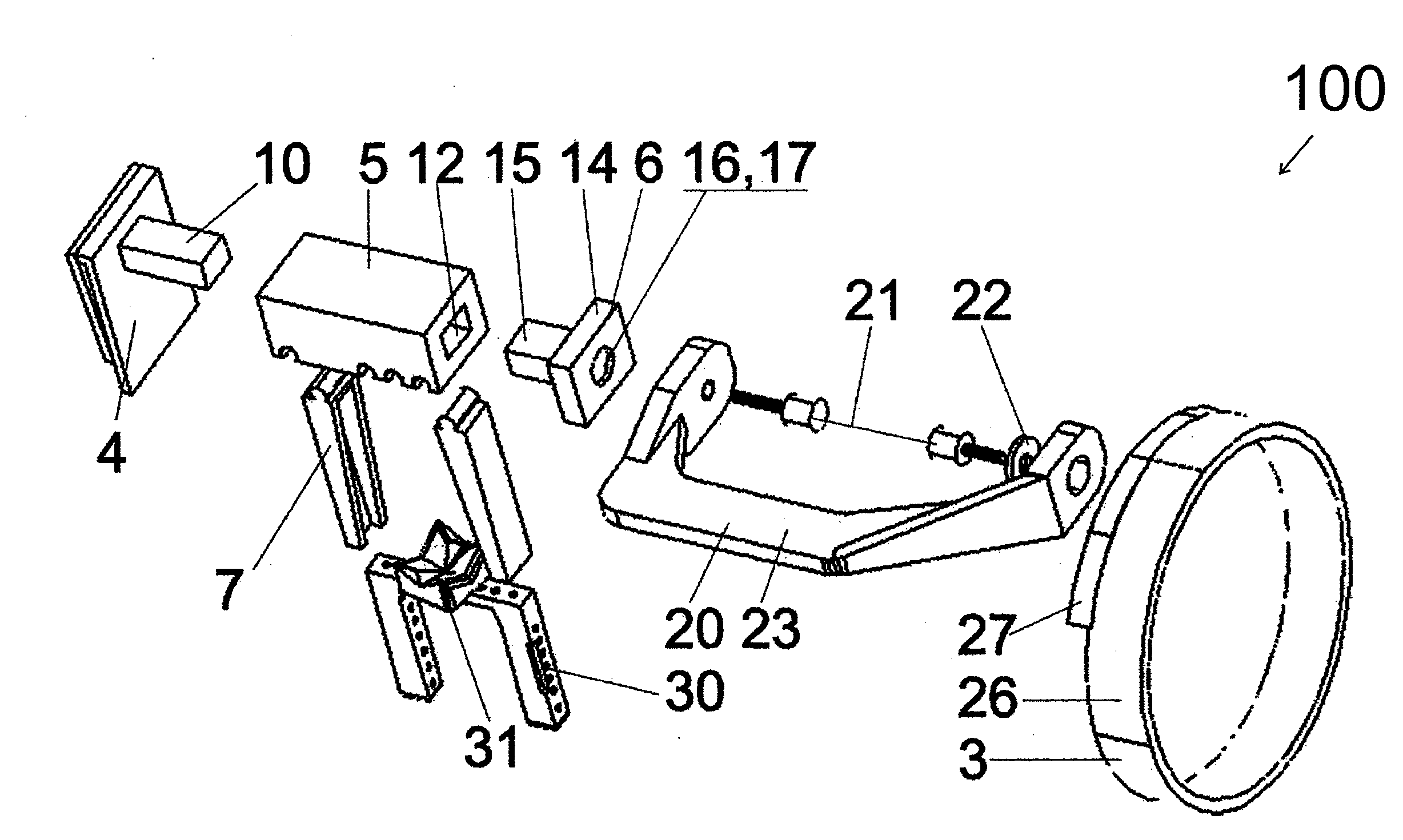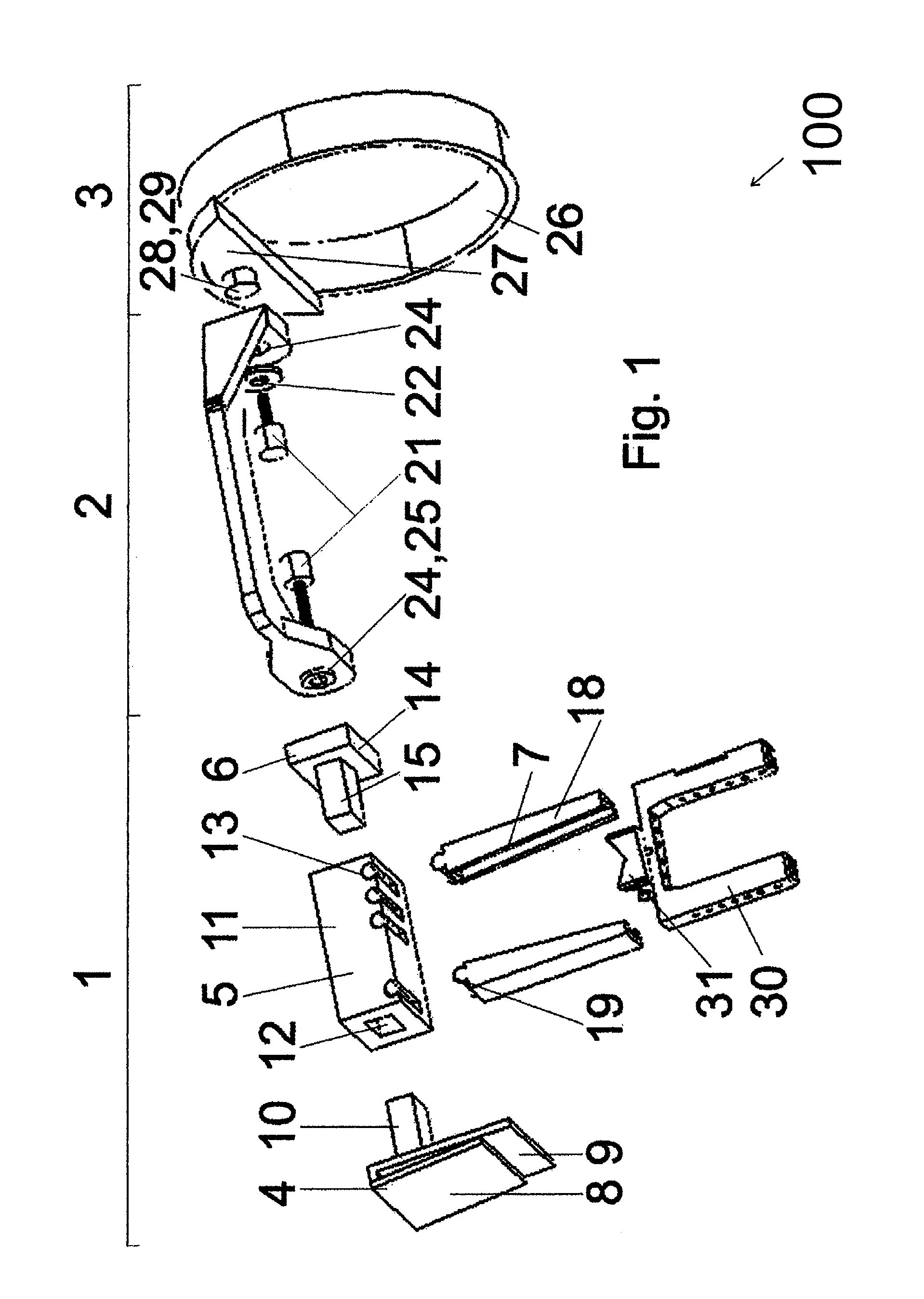The radiographic positioners used at present enable the positioning of the film inside the patient's mouth, but do not guarantee parallelism between the film and the border of the patient's alveolar bone.
As a result, the images obtained almost invariably exhibit deformations / distortions due to wrong alignment of the film with respect to the bone, and to not exhibit geometrical and dimensional fidelity.
The procedure of perforating the bone portion of the patient should be carefully studied, since making the perforation at an inadequate site may impair the result of the implantation, in both the esthetic and sometimes the functional aspects, if the fixation becomes difficult due to the incorrect position of the orifice.
In the case of an
implant applied to the lower alveolar bone (mandible), there is the aggravating factor of the presence of nerve tissue (lower alveolar nerve) in an inner cavity that goes through the bone, for which reason this situation needs to be considered unfailingly at the time of carrying out the
implantation procedure.
If the nerve is reached and damaged, this may result in partial
paralysis of the patient's face, becoming permanent sequelae in most cases.
However, if the first orifice was already correctly positioned, then the final orifice of the
implant may be impaired.
And, since
radiography produces a two-dimensional (height and width) image, which does not enable one to view the third dimension, that is to say, the thickness of the bone border, the professional resorts to a gingival probing examination.
However, the efficiency of all this procedure is impaired because, in
spite of the result of the gingival probing, irreparable distortions or deformations of the radiographic images still exist, which are due to limitations in the present radiographic positioners, which are not able to guarantee parallelism between the radiographic film and the border of the patient's alveolar bone, unless by a stoke of luck.
As serious drawbacks, the device disclosed
ion document BRMU 6400302-7 does not provide rigid fixation and does not guarantee, with sufficient precision, perfect positioning and parallelism of the film with the object being X-rayed.
Such failure results from the fact that fixation in a given position is guaranteed by
occlusion, so that, when the patients bites, displacement and inclination of the positioner may occur (and usually occurs), depending on the
anatomy of the teeth and on the intensity of the bite.
The device disclosed in that document, in
spite of presenting rigid fixation by means of the resin, does not provide means for guaranteeing parallelism, because the resin only fixes the device in the position in which it is, nor does it teach means for guaranteeing that this positioning is correct, keeping the radiographic film parallel to the bone.
As another drawback, this is a quite toilsome procedure, since the making of the bite guide with resin is always individualized, specifically intended only for that patient, which requires more time and makes the process expensive.
This device is specific for application in endodontical treatment and is not effective for making radiographic shots with a view to making implants, because, since it does not have rigid fixation, it cannot guarantee with sufficient accuracy the perfect positioning and parallelism of the film with the object being X-rayed (bone).
This failure results from the fact that the fixation in a given position is guaranteed by
occlusion, so that, when the patient bites, displacement and inclination of the positioner may occur depending on the
anatomy of the teeth and on the intensity of the bite.
So far, no process for obtaining radiographic images (preferably, but not compulsorily designed for obtaining periapical radiographic images) had been developed, without such images presenting deformations / distortions due to wrong alignment of the film with respect to the bone.
 Login to View More
Login to View More  Login to View More
Login to View More 


